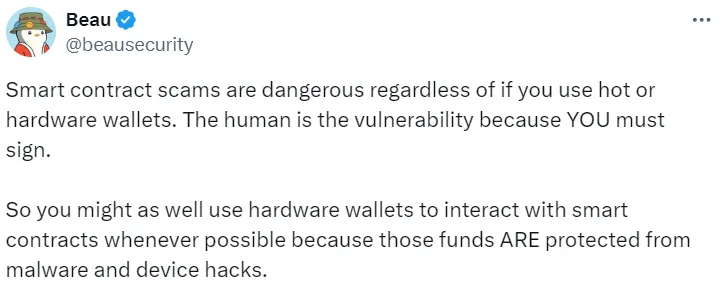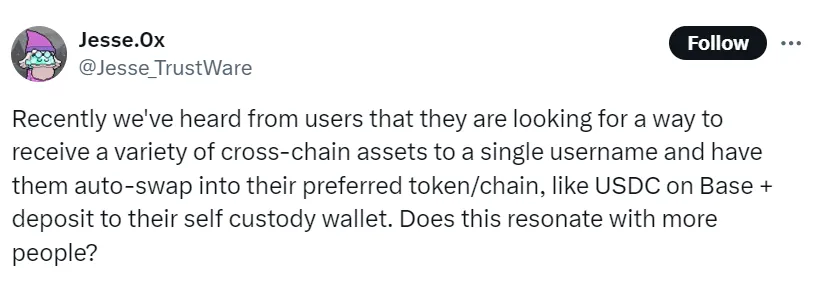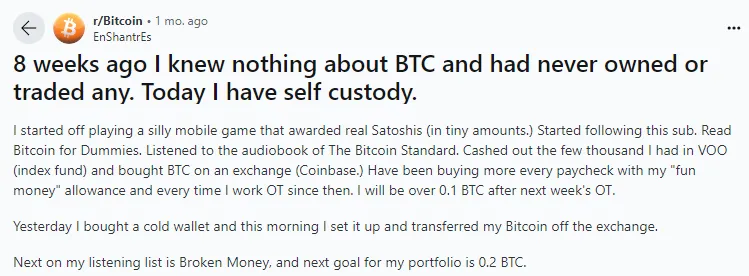Following the collapse of major centralized exchange FTX in late 2022, Bitcoin withdrawals reached historic levels, with a massive 106,000 BTC being moved monthly to self-custody wallets.
This movement underscores the importance of users securing their own assets rather than relying on exchanges, particularly after events that erode trust in centralized platforms.
In this article, we’ll explore what self-custody wallets are, how they work, and the benefits and risks involved in using them.
A self-custody wallet is a digital wallet where you, the user, have complete control over your cryptocurrency assets. Unlike custodial wallets—where a third party, like an exchange, holds the private keys on your behalf—self-custody wallets put the responsibility of managing and safeguarding these private keys entirely in your hands.

The history of self-custodial wallets can be broken down into 4 distinct stages:
The concept of self-custody in cryptocurrency began with the creation of Bitcoin in 2009. Bitcoin’s underlying technology, blockchain, introduced the idea of digital ownership secured by private keys, where users could directly control their assets without relying on intermediaries.
The first self-custodial wallet was simply Bitcoin’s original protocol, which came bundled with the initial Bitcoin client. This software allowed users to generate and manage their private keys locally on their computers, marking the beginning of decentralized asset ownership.

As Bitcoin grew in popularity, early enthusiasts recognized the potential and risks associated with holding private keys on computers, which were vulnerable to hacks and malware. Software wallets remained the only option until more secure storage solutions started to emerge.
As Bitcoin’s value increased, so did concerns about security. This led to the invention of paper wallets—offline storage solutions where private keys were printed on a piece of paper and stored in secure locations, reducing the risk of online theft. Paper wallets offered a simple but effective way for long-term holders to secure their assets, as the keys were entirely offline and immune to digital attacks.

Around the same time, multi-signature (multi-sig) technology was introduced. This technology required multiple private keys to authorize a transaction, improving security by making it harder for hackers to access funds. Multi-sig wallets became popular for organizations or individuals needing extra layers of security.
The next major development came in 2013 with the introduction of hardware wallets, which offered a much more secure way to store private keys. Companies like Trezor and Ledger created dedicated devices that stored private keys offline, allowing users to sign transactions without exposing keys to potentially compromised computers. Hardware wallets were widely adopted by security-conscious users, especially as the value of Bitcoin and other cryptocurrencies continued to rise.

This period also saw the launch of many new cryptocurrencies, or “altcoins,” beyond Bitcoin. With the rise of Ethereum in 2015, self-custody became more complex, as users needed wallets compatible with multiple types of assets. Software wallets like MyEtherWallet (MEW) began to support Ethereum and ERC-20 tokens, giving users more options but also requiring them to be more diligent in managing different wallet types.
With the cryptocurrency market’s growth in 2017, self-custody wallets became more user-friendly and accessible. Software wallets like MetaMask gained popularity, especially among users looking to interact with decentralized finance (DeFi) applications on Ethereum. These wallets allowed users to access DeFi protocols directly from their browsers, marking a shift toward more interactive self-custody experiences.

During the DeFi boom of 2020, self-custodial wallets became essential tools for users who wanted to participate in decentralized lending, borrowing, and trading. Wallet providers integrated features to help users connect with various decentralized apps (dApps) seamlessly, emphasizing control and security over assets without intermediaries.
With the mainstreaming of cryptocurrency in 2021, more people and institutions began to seek secure self-custody solutions. High-profile hacks and exchange failures emphasized the need for personal control over assets, further driving demand for self-custody wallets. Innovations like multi-chain wallets, which allow users to manage assets across multiple blockchains, have been developed to simplify the self-custody experience.
Today, self-custody wallets continue to evolve with new features like cross-chain compatibility, hardware integrations, and mobile-first designs. Institutional investors and individual users alike are increasingly adopting self-custody, acknowledging its role in protecting assets in an industry with minimal regulatory safety nets.

Self-custody wallets have come a long way from being simple software wallets to sophisticated tools supporting multiple assets, dApps, and DeFi protocols, remaining central to the ethos of cryptocurrency.
Understanding how self-custody wallets function requires:
In a self-custody wallet, your private key is essentially the password that unlocks access to your funds.
Think of it as a supercharged digital key: whoever holds this private key has the power to access, manage, and move the assets stored in the wallet.
In custodial wallets, these private keys are managed by a third party, like an exchange, but in a self-custody wallet, only you have access.

This approach gives you complete control but also means you're solely responsible for safeguarding the private key.
Lose it, and you lose access to your assets — no “forgot password” option here.
Many wallets use advanced encryption and security methods to help you protect this key, but ultimately, it’s your responsibility to keep it safe and backed up, often in a secure offline location.

Self-custody wallets allow you to perform all essential crypto transactions directly and securely. These include:
Each transaction you make is secured through cryptographic methods, ensuring privacy and reducing the risk of unauthorized access. Many wallets include features like transaction verification and encryption to protect each step of the process.
The withdrawal process in a self-custody wallet allows users to transfer assets securely from their portfolio to an external wallet.
Here’s a step-by-step breakdown of the process on MC² Finance:
Step 1: Select the token
Step 2: Enter the amount to withdraw
Step 3: Enter destination wallet address
Step 4: Review and confirm
There are various types of self-custody wallets, including:
1. Multisignature wallets
2. Social recovery wallets
3. Smart contract-based wallets
4. Biometric wallets
5. Sharded wallets
Multisignature (multisig) wallets require multiple private keys to authorize a transaction, increasing security by preventing single points of failure. This wallet type is ideal for organizations or joint accounts, where multiple approvals are required for asset transfers.
Example
John, Sarah, and Mike use their Gnosis Safe wallet for their small business. When they need to pay a supplier, two of them must approve the payment using their phones.
This is super safe because even if a thief steals John’s phone, they can't take any money without Sarah or Mike's approval. The downside? It can be a pain when they need to make quick payments and one person is unavailable.

Social recovery wallets, often used with account abstraction, allow you to assign “guardians” (trusted individuals or devices) who can help recover the wallet if the private key is lost. This type of wallet aims to balance self-custody with a secure recovery option.
Example
Alice uses Argent wallet, which works like having backup keys to your house with trusted neighbors. She set up her parents and best friend as her “guardians” who can help her get back into her wallet if she loses her phone.
The only catch is that Alice needs to really trust her guardians, because if they all turned against her (unlikely, but possible), they could potentially take control of her wallet.

Smart contract wallets are a newer type of self-custody solution in decentralized finance (DeFi). These wallets use programmable smart contracts to enforce specific conditions or rules, such as time-locked transactions or spending limits, adding an extra layer of functionality and security.
Example
Tom uses Safe{Core}, which is like having a smart bank account with built-in rules. He set it up so he can't spend more than $500 per day, and any bigger payments need to wait 24 hours before going through.
The downside is that sometimes Tom gets frustrated when he needs to make a big, urgent purchase and has to wait a full day because of his own safety rules!

Biometric wallets combine hardware and software security with biometric authentication, such as fingerprints or facial recognition, to access the wallet. While still fairly new, this type offers a streamlined, secure option for accessing funds without traditional PINs or passwords.
Example
Maria loves her Samsung crypto wallet because it's as simple as unlocking her phone - just a quick fingerprint scan and she’s in!
However, she knows she needs to be careful because if someone somehow copies her fingerprint (like from a high-quality photo), they could potentially access her wallet. Still, for everyday use, it's much easier than typing passwords.

Sharded wallets, based on Shamir’s Secret Sharing, divide the private key into multiple parts (shards) and distribute them across different people or devices. Only a subset of these shards is required to reconstruct the private key, making this a secure, distributed solution for holding large amounts of assets.
Example
David uses Casa wallet, which is like splitting a treasure map into five pieces for super security. He keeps one piece in his home safe, another in a bank vault, and gave others to trusted family members.
While this makes his crypto super secure, it’s definitely not convenient for everyday use — imagine needing to gather three pieces of a map every time you want to buy something! But for his large crypto savings, David thinks the extra security is worth the hassle.

Here’s a checklist containing all the essential factors to ensure that whatever self-custody wallet you choose aligns with your specific needs and preferences
Look for wallets with strong security features, such as encryption, private key protection, and options for two-factor authentication. MC² Finance offers robust, self-custodial solutions that keep your assets under your full control, with no intermediaries.
Ease of use is essential, especially for users who are new to crypto. MC² Finance’s interface is designed for simplicity, allowing seamless navigation for creating, managing, and tracking your digital assets across chains without hassle.
Check if the wallet supports a wide range of assets, especially if you plan to diversify. MC² Finance supports cross-chain compatibility, making it easy to manage and trade various cryptocurrencies from a single platform.
Ensure the wallet can operate on your preferred device, whether it’s mobile or desktop. MC² Finance’s platform is accessible on both, offering flexibility for users to monitor and trade anytime, anywhere.
Identify what matters most to you.
Depending on your activities, you may require a platform that supports trading, DeFi interaction, or long-term holding. MC² Finance is versatile, catering to all these needs through advanced analytics, security features, and portfolio customization.
Follow this guide to get started with your self-custody wallet:
1. Choose a wallet provider
Select a reputable self-custody wallet provider that supports the cryptocurrencies you plan to store. Popular options include MetaMask for Ethereum-based assets, Ledger or Trezor for hardware security, and Trust Wallet for mobile access. Each wallet offers different features, so consider which aligns best with your needs.
2. Create a new wallet
Once you’ve selected your provider, download the wallet app or extension and follow the prompts to create a new wallet. During setup, you’ll be asked to generate a seed phrase—a series of words that act as a backup for your wallet.
3. Secure your private key or seed phrase
Write down your seed phrase on paper and store it in a safe place. Avoid storing it digitally, as it can be vulnerable to hacks. Remember, anyone with access to this seed phrase can control your assets, so prioritize security.
4. Customize wallets for strategies (optional)
If you plan to run multiple strategies, consider setting up separate wallets for each.
💡 For example, MC² Finance allows you to manage multiple strategy wallets, making it easier to allocate assets based on different trading goals. Naming each wallet according to its strategy can improve organization.
1. Organize and track assets
Self-custody wallets like MC² Finance provide dashboards to help you view and manage your holdings. Regularly check your portfolio and ensure your assets align with your investment goals.
2. Fund your wallets
Transfer cryptocurrency from an external wallet or exchange to fund your self-custody wallet. For users of MC² Finance, you can also link wallets to different strategies, adding flexibility in how you allocate your funds across the DeFi landscape.
3. Use portfolio tracking tools
Consider using portfolio tracking platforms like Debank or Zapper to monitor your tokens across different chains and protocols. These tools offer insights into asset distribution and can simplify portfolio management.
1. Regular backups
Your seed phrase is the only way to recover your wallet if you lose access. Consider making multiple backups of your seed phrase and storing them in secure, separate locations. Avoid digital backups for added security.
2. Update your wallet regularly
Stay updated with the latest wallet software versions to benefit from enhanced security and functionality. Wallet providers like Ledger or MetaMask regularly release updates that may improve performance and protect against new security threats.
3. Monitor and maintain security
Regularly review your wallet settings, enable two-factor authentication (if available), and avoid interacting with unknown or suspicious platforms. Always verify wallet addresses before initiating transactions to prevent accidental errors or security risks.
MC² Finance offers an entire DeFi ecosystem, with tools for creating and managing strategy-based wallets and smart portfolios, offering additional flexibility and control over your digital assets.
Check how optimized your wallet is?
Automatically mirror a trader's trades in your own wallet, in real-time, while maintaining full custody of your assets at all times.

Approved On Swiss Stock Exchange

"We’re building the BlackRock of DeFi—with better margins, faster growth, and a token that pays
for itself."